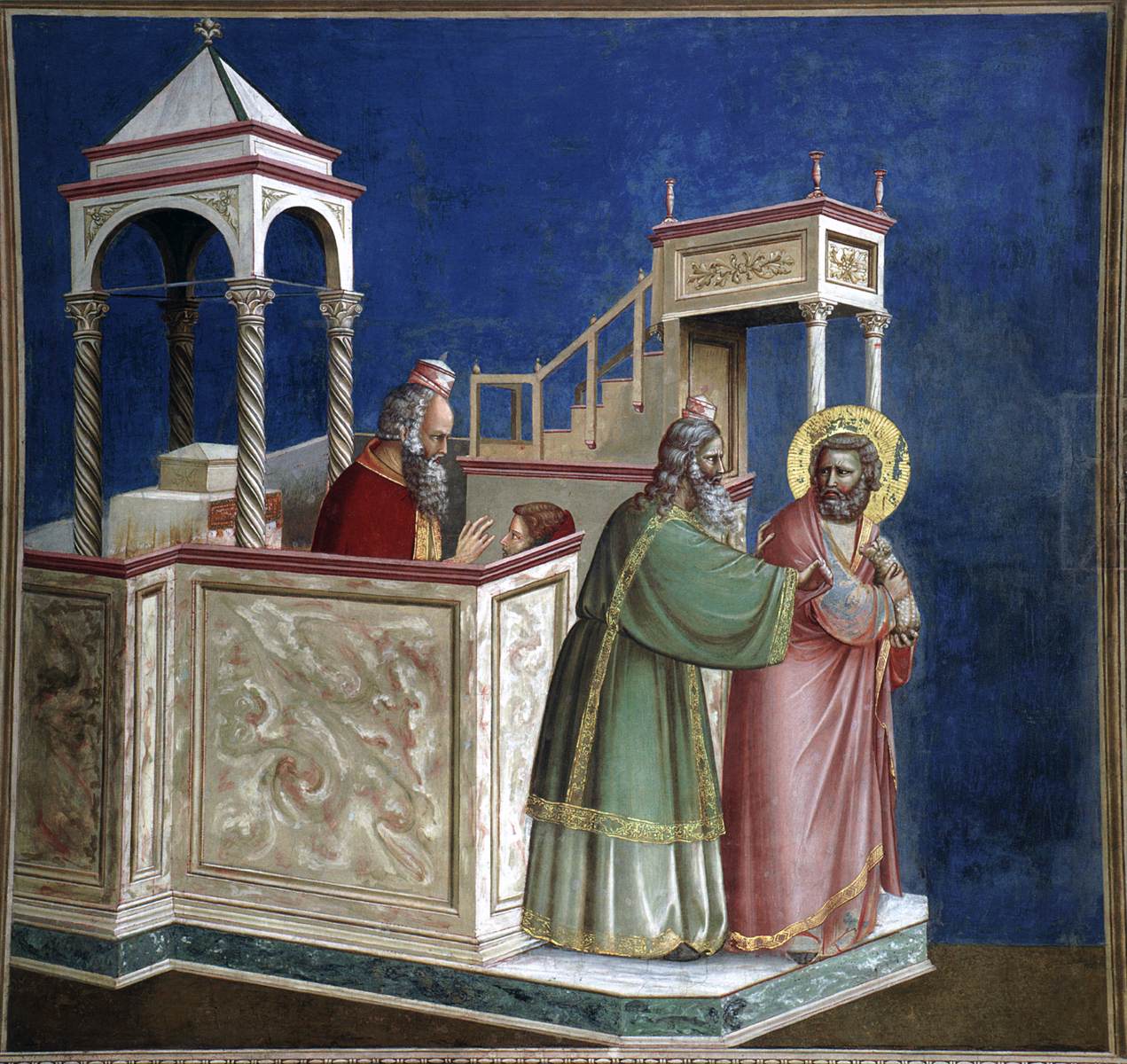Description
Painting No. 1 Scenes from the Life of Joachim: 1. Rejection of Joachim's Sacrifice by the Italian artist Giotto Di Bondone is a masterpiece of the 14th-century Gothic style. The painting depicts a dramatic moment in the life of Joachim, father of the Virgin Mary, when his sacrifice is rejected by the temple priest.
Giotto's artistic style is characterized by its realism and emotional depth in his works. In this painting, we can see the expression of pain and sadness on Joaquín's face, while the priest of the temple shows a cold and indifferent attitude.
The composition of the painting is very interesting, as Giotto uses the "single point of view" technique to create a sense of depth and space. Joaquin's figure is in the foreground, while the priest and the temple are in the background, creating a sense of distance.
The color used in the painting is highly symbolic. The dark and gray tones used in the clothing of Joaquín and the priest represent the sadness and solemnity of the moment, while the golden color of the temple symbolizes divinity and holiness.
The story behind this painting is very interesting. According to Christian tradition, Joachim offered a sacrifice in the temple to ask for God's blessing and the conception of a son. However, his sacrifice was rejected by the temple priest, which made him feel humiliated and hopeless.
A little known aspect about this painting is that it was one of Giotto's most important works and is located in the Scrovegni Chapel in Padua, Italy. The painting is part of a cycle of frescoes depicting the life of the Virgin Mary and is considered one of the most important works of Italian art.
In conclusion, the painting No. 1 Scenes from the Life of Joachim: 1. Rejection of Joachim's Sacrifice is a masterpiece of Gothic art, noted for its realism, emotional depth, symbolism and artistic technique. This painting represents a dramatic moment in Joachim's life and is considered one of the most important works of Italian art.

